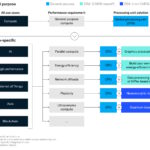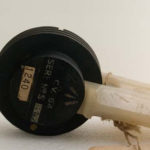Before being awarded a Nobel Prize, Patrick Blackett was a pioneer in the use of extensive data analysis, error bounding, and probability theory of anecdote-based tactics, as he devised improved strategies against deadly German submarines.
Part 2 of this article looked at Blackett’s work with the CH radar installation on Britain’s coast. This part looks at his U-boat offensive efforts.
The U-Boat war
A huge problem was the destruction caused by the German U-boats (Figure 1). At their peak, they were sinking hundreds of vessels in the Atlantic every month, with the loss of tens of thousands of tons of cargo and thousands of sailors and merchantmen. The German view, based on the success of U-boats as a weapon, was that these submarines would be the key factor in choking off Britain and the rest of Europe from essential American aid. Building a fleet of hundreds of these boats was a top priority to which the Nazi regime devoted an enormous fraction of wartime resources.

Blackett was assigned to head the anti-sub operation office and built a team around a diverse group of mathematicians, musicians, biologists (they were especially good at dealing with imprecise data, he noted), and almost anyone who had either a unique skill or a useful blend of skills. He realized that intuition-based tactics based on the collection of anecdotes and limited anti-sub experience would not be enough to defeat the U-boats, and were inherently ineffective. In May 1941, aircraft had sighted U-boats 200 times, carried out 130 attacks based on those sightings, and sunk just two U-boats.
Instead, he went to basics. He applied analytical methods, analyzing every report of U-boats sightings, their evasive maneuvers, attack tactics, and success/failure. He checked the sources of each report and found many were incorrect, whether due to the fog of war, or wishful thinking and projection.
Then, using this data and probability theory, along what was then called “operational research” (re-labeled as “big data/analytics” in the 21st century), he devised small and large tactics that yielded two benefits. They significantly improved the efficiency of the limited sub-hunting resources and resulted in a substantial increase in the success in both spotting and sinking U-boats.
Many of his ideas were at odds with the established conventional thinking, which was based mainly on anecdotes and supposition, but he persevered; his credibility as an experienced navy officer (despite being an academic and physicist) greatly helped overcome resistance to his proposals. His approaches dramatically increased the successes in finding, attacking, and sinking the submarines, and significantly diminished the threat of U-boats to trans-Atlantic shipping within about 18 months.
The tactics used to find and destroy the U-boats were severely constrained by the aircraft and weapons technology of the time. British planes with limited range and munitions would fly over designated zones of the Atlantic Ocean, hoping to spot a surfaced U-boat, as aircraft-based radar was not available in these first critical years. (Note that the subs spent as much time as possible on the surface, due to their diesel-electric propulsion’s need for air combined with limited battery capacity for undersea operations.). If the aircraft did see a sub, it then tried to sink it with a torpedo or depth charge. In nearly all cases, the U-boat spotted the plane before the plane got close enough to launch its weapons, went underwater, and so escaped harm. Even if the aircraft did attack, it was “too little, too late” in nearly every case.
The U-boat command had also developed a devastating tactic. If one of them saw a convoy of ships (the preferred way to make the ocean voyage, for many reasons), it would radio U-boat headquarters in code with the position, and then tail the convoy while staying just outside of convoy’s detection range. Headquarters would then instruct any other subs in the area to meet up to form a “wolf pack” to attack the convoy. As a result, many ships in the convoy would be sunk; if any Allied planes were in the area, they could do little because the subs attacked from underwater, and there was little a single, or even a few aircraft could do against the wolf pack.
Blackett’s team studied the operational capabilities and evasive tactics of the U-boats, analyzed all reports of U-boat sightings, sinkings, and escapes, and matched these with the limited ordnance capacity of the sub-hunting aircraft. They then formulated new strategies for engagement which including modifying the depth at which the charges would explode, the distance between the laying of multiple charges, and other factors (Figure 2).

They also showed where it made more sense not to bother attacking, as it would be a waste of minimal resources, as aircraft could carry torpedos or depth charges on board for only one or two attacks, then had to return to base. As a result of this effort and other important factors, such as airborne radar and breaking the German Enigma code used between naval vessels and command, the success rate by 1943 increased dramatically from single digits to high double-digits.
They looked further to make better use of what was already available, by analyzing data and operational sequences in detail, rather than look to a new technology solution and studied the initial contact between the aircraft and the U-boats. The surfaced U-boats on patrol used multiple lookouts, scanning the skies for any approaching enemy aircraft. These spotters could usually see the aircraft and initiate an evasive dive before the plane could get close enough to attack. What Blackett’s team found was that the black-painted undersides of the planes – done to make them harder to see above at night – was making it easier for the lookouts to see them during the day and see them sooner. By painting the aircraft undersides white so they would blend in with the sky, spotters had a much harder time seeing the planes until they were much closer, especially if the plane had the sun behind it. This simple repainting exercise reduced by 20% the average maximum distance at which the planes could be seen and doubled the number U-boat sightings.
The extraordinary dedication efforts of Patrick Blackett and the operational research teams he led were the genesis of modern analytics, the role of big data, and rigorous analysis. He also knew that theory had to be overlapped with reality, by accepting that data points often had measurement errors, and integrating probability-based thinking into his reports and proposal. Many of these concepts are still in wide use, though updated with big data, advanced algorithms, and massive database management capabilities.
The next part of this article looks at another “big data” operation during WWII unrelated to Blackett, using similar principles of confirming data, seeing what data is available and what is missing, studying the entire data set, and thinking “outside the box” with respect to what the data implies.
References
- The Noble Prize, “Patrick M.S. Blackett – Facts“
- John Terraine, “The U-Boat Wars: 1916-1945,” G.P. Putnam’s Sons, 1989.
- Stephen Budiansky, “Blackett’s War: The Men Who Defeated the Nazi U-Boats and Brought Science to the Art of Warfare,” Alfred A. Knopf, 2013.
- May Jo Nye, “Blackett: Physics, War, and Politics in the Twentieth Century,” Harvard University Press, 2004.
- Paul M Kennedy, “Engineers of victory: the problem solvers who turned the tide in the Second World War,” Random House, 2013.
- Donald G. F. W.Macintyre, “U-Boat Killer: Fighting the U-Boats in the Battle of the Atlantic,” Rigel Press, 2004.
- Robert Buderi, “The Invention that Changed the World: How a Small Group of Radar Pioneers Won the Second World War and Launched a Technological Revolution,” Simon & Schuster, 1998.
- Royal Air Force Museum, “RADAR – The Battle Winner?”
- We Are the Mighty, “The mathematician who saved hundreds of flight crews”
- Medium, “Abraham Wald and the Missing Bullet Holes” (an excerpt from “How Not To Be Wrong” by Jordan Ellenberg)
- American Mathematical Society, “The Legend of Abraham Wald”






